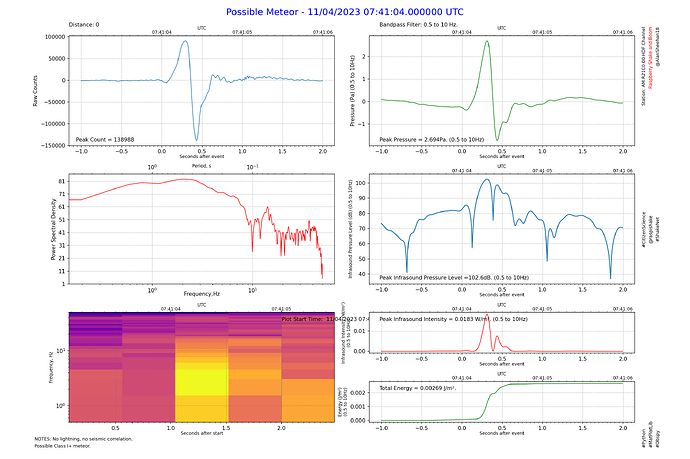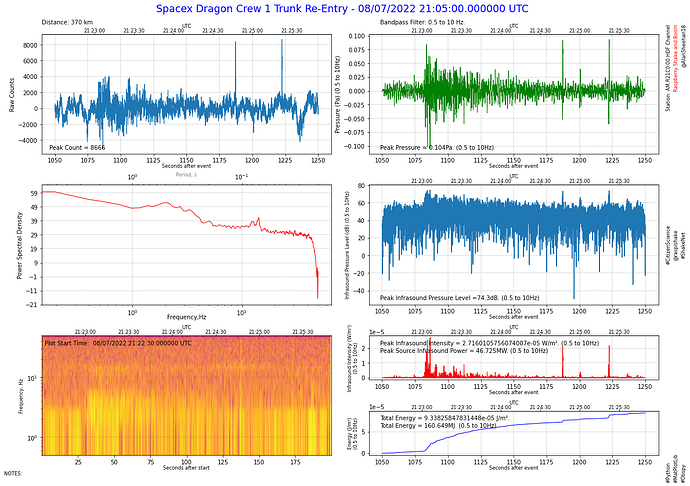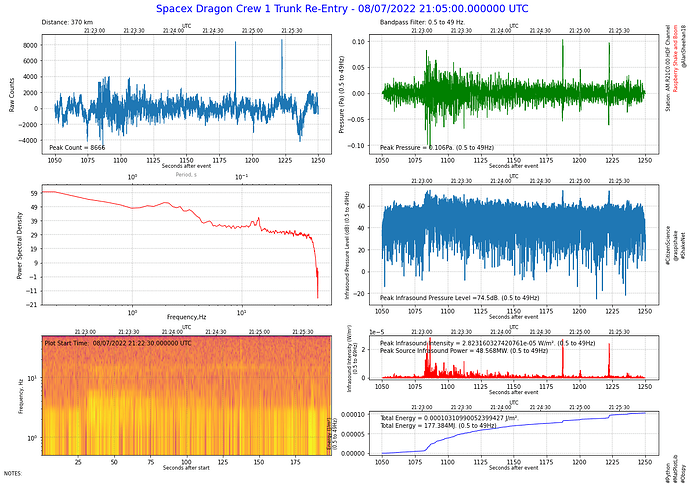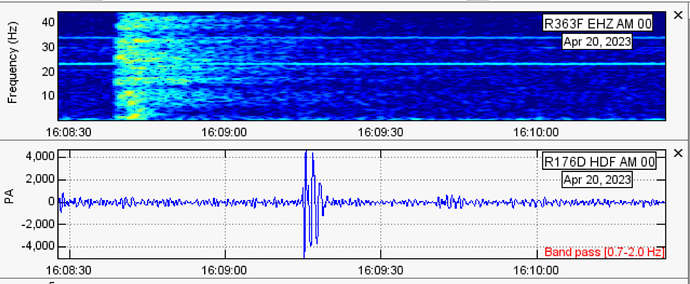G’Day Tom,
I haven’t detected many possible meteors of late because I haven’t really been looking (listening). I was quite keen to learn the Boom’s capabilities last year and put a lot of effort into it, but in the end I found that for everyday meteors, the my S&B is quite deaf. That may be partly to do with where and how I have mine installed, but I think the sensitivity of the Boom is also a limiting factor.
I’m also very careful to describe any detections as Possible Meteors, as I don’t have the means to confirm a visual meteor to correlate to the signal. If you have an all sky camera and there are other camera nearby to allow calculation of the trajectory, then you are in a position to correlate the visual meteor with the IR signal allowing for sound travel time.
Below is the only Possible Meteor signal I have bothered to document this year. I mainly documented it because it was quite large, so I was hoping to hear about a coincidental sighting/event:
I have found that on busy meteor shower nights, sometime I have only detected a handful of possible meteor signals. So, no, I haven’t really been chasing the Lyrids which at +34° is largely a northern hemisphere shower.
However, large bolides and re-entering space junk are louder sources and much better suited to detection on the Boom. Here’s is the signal from the Spacex Crew 1 Dragon Trunk Re-entry detected last year but reworked (with correct Sound Pressure Levels) earlier this year:
BTW when I suggested taking notice of when fridges start, etc I wasn’t thinking of electrical interference or spikes at all. Motors and machines of all types can produce infrasound signals on start up, or stop or while running - start up and stop obviously most likely to produce a spike like a meteor, so my advice still stands. Anything that can make sound can make infrasound, so learn what local noise sources you have. For example, I can identify doors and windows being opened or closed, the dogs going through the doggy doors (and whether they are going in or out!), sometimes footsteps in the house, the washing machine, the dryer, the dishwasher, the printer, my NAS drive, trucks passing on the road out the front, etc. These are all the interesting (but boring once you know what they are) things you need to know so you can start finding the truly unusual things. ;o)
Al.




